.avif)
Xona Space Systems: Redefining Precision PNT Beyond GPS
Xona Space Systems: How Next-gen Systems Beyond GPS is Redefining Precision PNT for a Connected World
.avif)
Xona Space Systems: How Next-gen Systems Beyond GPS is Redefining Precision PNT for a Connected World
PNT stands for Positioning, Navigation, and Timing, which refers to the system of technologies used to determine location, provide navigation data, and synchronize time across various applications.
Every second, billions of devices around the world rely on PNT (Positioning, Navigation, and Timing). It underpins the rhythm of modern life, quietly powering everything from food delivery and ride-sharing to global trade, emergency response, and time-sensitive infrastructure.
Every time you order an Uber or track your meal on Uber Eats, PNT is at work. It guides packages across continents, enables real-time navigation for millions of drivers, and ensures ambulances reach those in need without delay. PNT doesn’t just tell us where we are—it tells our systems when to act.
Beyond mobility, it functions as the invisible clock of modern infrastructure. Every timestamp on a bank transfer, every millisecond in stock trading, and every signal handoff between cell towers depends on GPS system time. Without it, our financial systems would stall, communications would falter, and critical global infrastructure would begin to fail.

Since the earliest days of exploration, humanity’s ability to navigate the world across both place and time has shaped the course of civilization. Celestial navigation opened the seas to transoceanic travel. Long-wave radio systems enabled aircraft and military fleets to coordinate across vast distances.
The arrival of global navigation satellite systems introduced a new level of precision that transformed both military operations and civilian infrastructure, with GPS technology emerging as one of the most profound technological achievements of humanity.
Over the past century, PNT systems have advanced in regular, exponential leaps. Each generation has reduced error by an order of magnitude, expanding the boundaries of what is possible. Like Moore's Law1 in computing, each leap in GPS accuracy creates not just improvements, but entirely new market opportunities. What began with kilometer-level estimates has evolved into sub-meter precision and nanosecond timing, turning spatial and temporal data into one of the most critical and invisible layers of modern infrastructure.
In the decades ahead, that curve is expected to steepen even further. Reed’s Law2 reminds us that as systems become more connected, the value of each additional node or improvement grows exponentially. In the context of positioning navigation and timing, this means that each jump in accuracy or reliability unlocks not just incremental utility, but a cascading wave of new capabilities. However, as the range of PNT-dependent systems continues to expand, the gap between what GPS can offer and what modern applications demand is becoming increasingly difficult to ignore. Industries that once tolerated signal drift, latency, or loss are now encountering real constraints on growth and performance.
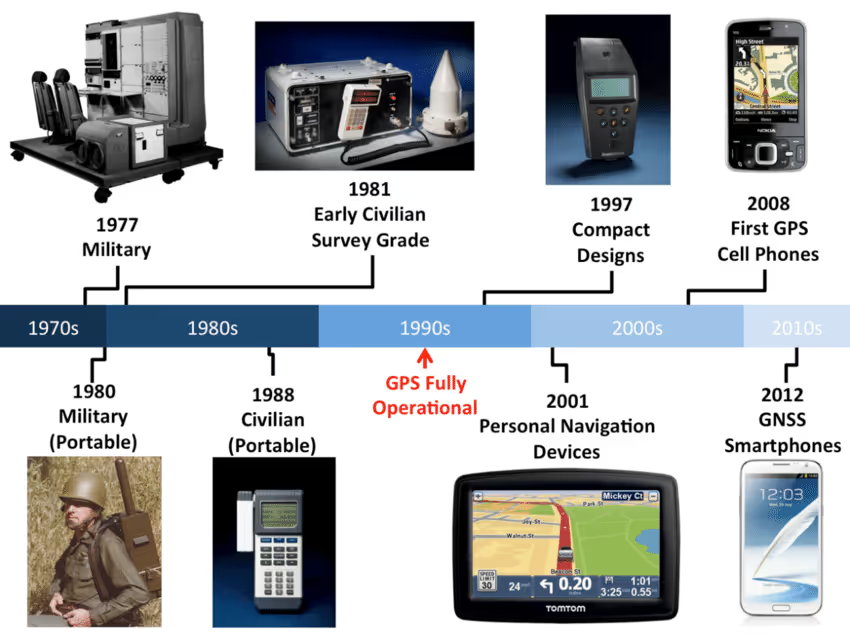
Originally designed for military navigation in the 1970s, global positioning systems (GPS) were never architected with the level of redundancy or resilience intended to support the immense complexity of today’s global digital infrastructure. Its signals, transmitted from satellites 20,000 kilometers above Earth, arrive weak and are easily disrupted by buildings, natural terrain, and even atmospheric interference.
In urban areas, these limitations cause GPS signal accuracy to degrade by tens of meters and have a growing vulnerability to jamming and spoofing in both civilian and military contexts.. As the reliability declines, the consequences extend far beyond missed turns, momentary signal loss, or delivery delays. Entire industries now face mounting operational risks with increasingly serious consequences.
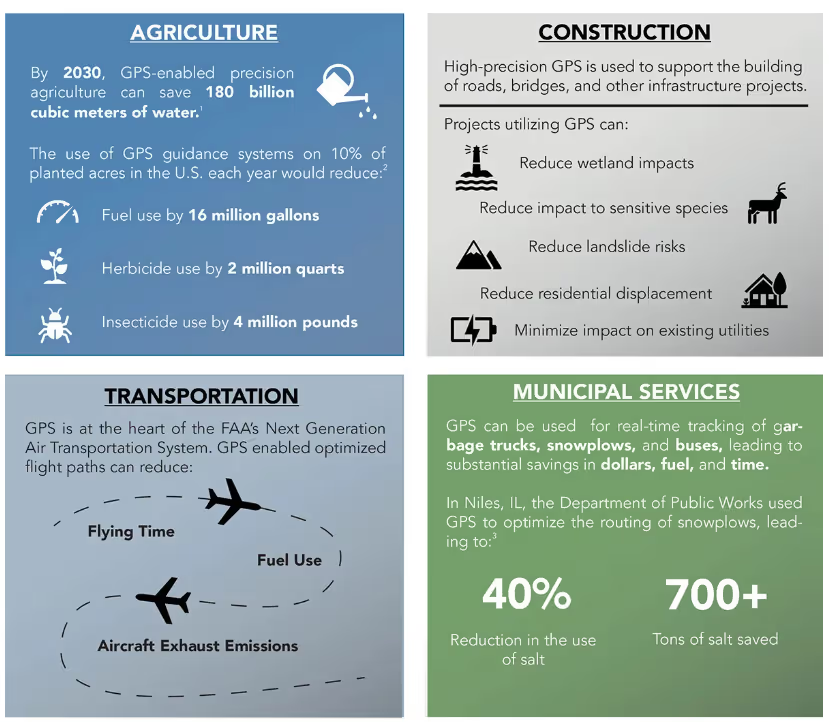
While ground-based augmentation systems like RTK networks, Wi-Fi triangulation, and 5G positioning improved accuracy in localized settings, they remain costly, fragmented, and still reliant on GPS—falling short of a scalable, next-generation solution. As we emphasized in our GPS Playbook, “GPS is a space-based technology that has generated trillions of dollars3 in economic value and some of the largest venture outcomes in history.”
Against this backdrop of inherent limitations, dependencies, and scalability constraints in existing PNT technologies, the need for a new path is clear. We believe it will require a fundamentally new architecture that is satellite-native, commercially scalable, and purpose-built to deliver secure, high-accuracy positioning and timing at a global scale.
Building the future of global navigation requires a team that understands both the challenges of space-based infrastructure and the real-world constraints of industries reliant on PNT.
Xona Space was founded by a group of eight engineers who first met at Stanford University’s Aero and Astro Department over a decade ago. After graduation, they pursued paths that spanned both cutting-edge aerospace programs and foundational GPS research. CEO Brian Manning led structural design work on the Falcon 9 at SpaceX, developing an appreciation for the fragility of current navigation systems in increasingly automated environments. CTO Dr. Tyler Reid earned his Ph.D. at Stanford’s GPS Lab, then brought that expertise to Ford, where he worked on localization for autonomous vehicles. Around them, others’ experience spanned Blue Origin, Maxar, BAE Systems, and the U.S. Air Force.
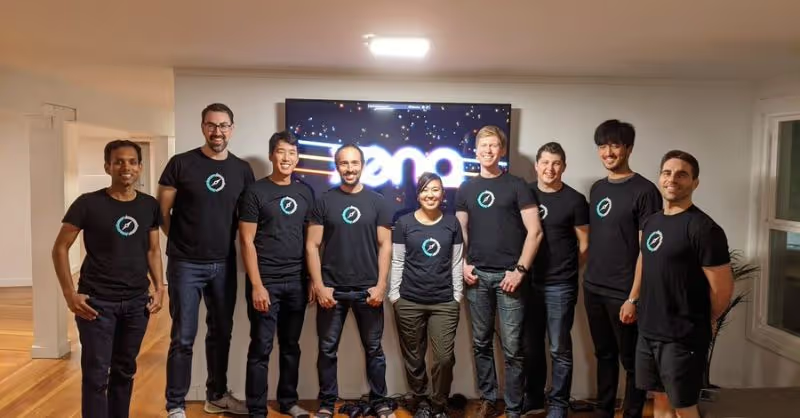
Reuniting in 2019, the Xona team aligned around this conviction that the legacy GPS system was not built for the connected, autonomous, and contested world ahead. PNT has long remained one of the last untouched domains, anchored in static, state-owned infrastructure.
The team looked to models like Starlink and Planet, which reimagined broadband and Earth observation—two sectors once monopolized by public agencies. Rather than retrofitting aging government systems, they saw an opportunity to do the same for satellite navigation by building a fundamentally new architecture rooted in commercial demand, because what most who question the market for premium GPS miss is that while GPS has long been treated as a free public utility, the cost of missed performance is not. Enterprises spend over $20 billion4 annually on GPS hardware and augmentation services, not to unlock new capabilities, but to work around the system’s limitations. That spending is a signal that the world is ready to pay for better PNT capabilities, if only a better system existed.
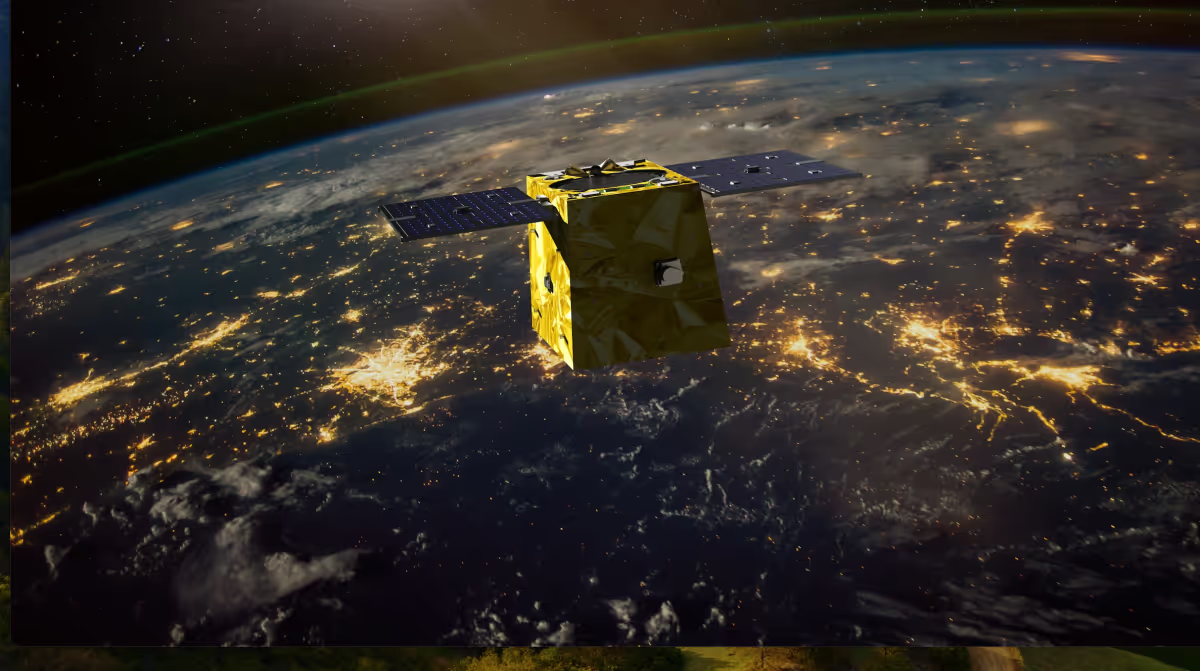
Xona’s answer is PULSAR, the world’s first commercial high-precision PNT service delivered via a dedicated constellation in Low Earth Orbit (LEO). Unlike traditional GPS, which relies on large, government-operated satellites in Medium Earth Orbit (MEO), Xona’s system uses small, low-cost satellites positioned 20 times closer to Earth. This enables a 170x stronger signal, lower latency, and vastly improved resistance to jamming and interference. What makes Xona different from previous efforts to enhance GPS comes down to three fundamental innovations:
While Xona is ultimately positioned to become the true successor to GPS, it begins by playing a critical augmenting role. The redundancy it provides is essential, especially as GPS becomes more vulnerable, and PULSAR enhances accuracy by complementing existing signals rather than replacing them outright. Just as important, PULSAR introduces a new level of simplicity.
By shifting complexity into space, Xona enables reliable, centimeter-level accuracy without the need for costly ground correction networks or specialized hardware. Instead, it integrates through a simple firmware update, turning high-precision positioning into a scalable software feature accessible across industries.
Since its inception, Xona has moved quickly. In 2022, it became the first company to launch a privately funded satellite navigation payload with its Huginn demo satellite. Its first production-class satellite is now scheduled to launch in June 2025 aboard SpaceX’s Transporter-14 mission, marking a key imminent milestone in bringing the PULSAR constellation into operational service.
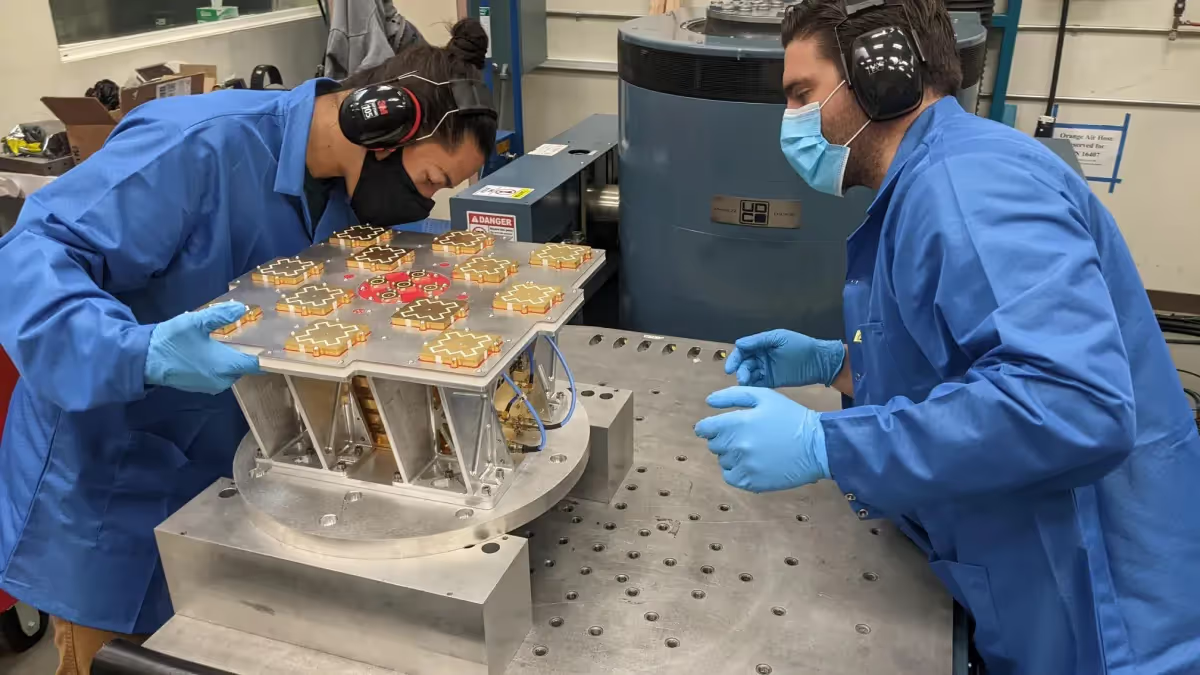
The future of navigation extends beyond mobility and maps; it now underpins nearly every emerging layer of our connected world. The demand for trusted, high-precision positioning is creating new business models and everyday utility at unprecedented scale. Xona is already operating across critical frontiers, focusing on high-value applications with minimal integration friction, and collaborating with ecosystem partners to deliver solutions where GPS clearly can no longer keep up.
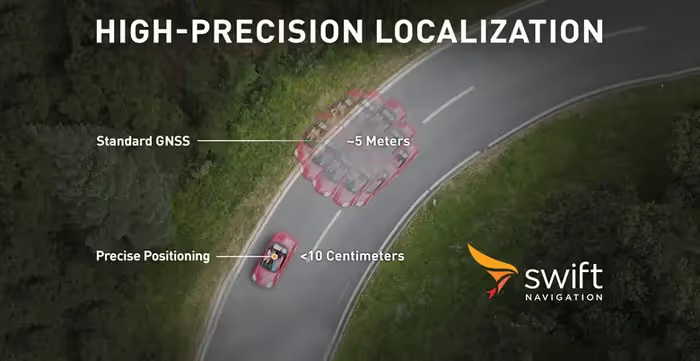
Notably, multiple recent exciting developments underscore how quickly Xona is moving from technical validation to large-scale operational relevance. In March 2025, Trimble, a global leader in positioning technologies, announced a collaboration with Xona to deliver GNSS corrections via its LEO satellites.
This marks the first commercial integration of PULSAR into a major enterprise-grade platform, enhancing Trimble’s already extensive portfolio of high-prevision positioning services across agriculture, construction, and infrastructure sectors. The partnership highlights the growing demand for resilient, multi-layered PNT solutions and validates Xona’s readiness to support industry-leading platforms at scale.
In parallel, Xona is gaining traction in the defense sector. In February 2025, the company was awarded a $4.6M contract from the U.S. Air Force Research Laboratory to demonstrate Pulsar’s performance in GPS-challenged and denied environments. The effort focuses on uncrewed aircraft and autonomous systems, where secure, high-precision navigation is essential.
Testing will include both simulated and live scenarios using Pulsar-enabled receivers. Earlier, in November 2024, Astranis selected Xona as its PNT algorithm partner for the Resilient GPS (R-GPS) initiative under the U.S. Space Force. The program aims to provide a sovereign, software-defined backup to GPS that can operate in contested environments. Xona’s software will run onboard Astranis satellites, enabling secure and persistent PNT services even when legacy systems are degraded or denied. This signals growing government recognition of the need for commercial resilience in national space infrastructure.
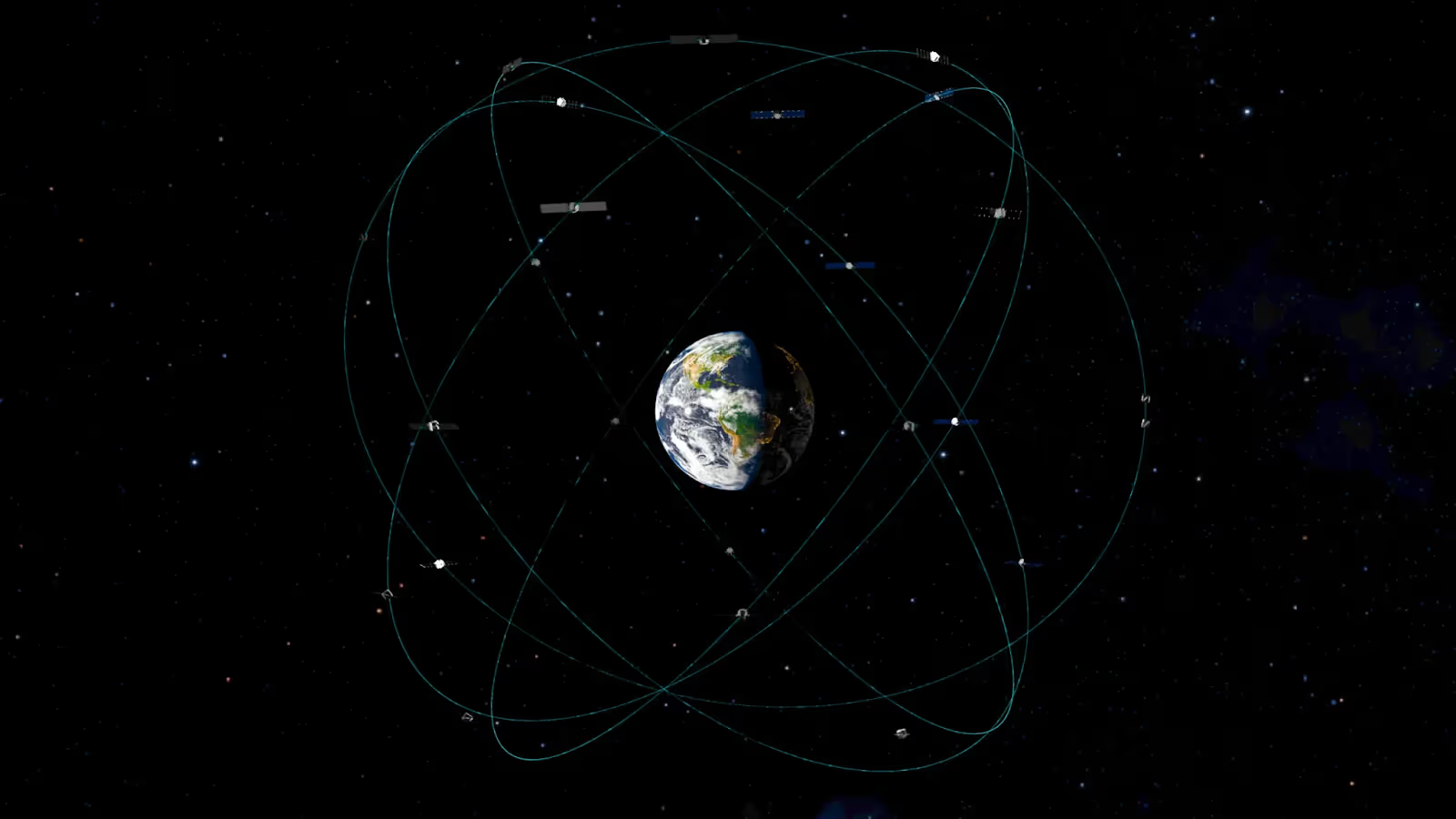
In a domain long dominated by government infrastructure and legacy architectures, we’re proud to back Xona as it leads the revolution in the future of PNT. With over 7 billion people depending on satellite navigation and GPS enabling more than $500B5 in annual economic value in North America alone, we find ourselves asking: if GPS were rebuilt today as a private system, what would it be worth? Xona is helping us find out—not by replicating what came before or merely closing a performance gap, but by reimagining what’s possible.
From celestial charts to satellites, each leap in our spatial and temporal awareness has expanded the boundaries of what humanity can build. As we enter a new era of autonomy and real-time, interconnected infrastructure, PNT remains the silent foundation beneath it all. Xona’s work is yet another powerful reminder that space technologies don’t just connect us—they quietly, but profoundly, continue to propel our civilization forward.